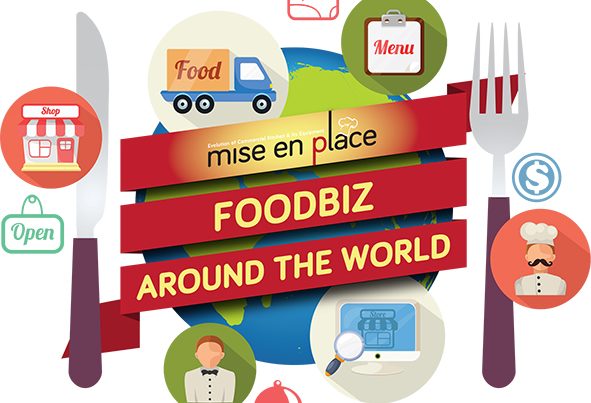According to a survey by YouGov consisting of more than 25,000 people across 24 countries, pizza and pasta was on the top spot of popular foods in the world, followed by Chinese and Japanese cuisine. Apparently, Italian food was the mostliked, a glimpse into its popularity just as much in Asia.
Pizza, particularly has a rich history to it. As pizzerias sprang up across America’s Eastern seaboard, it became the ex- Neapolitans’ snack of choice. By the 1950s, pizzerias were everywhere in the US – this is when the popularity of eat-in and take-out pizza began to invade the local cultures. Soon, it began to conquer the world – and we can certainly see its conquest in Asia!

BUT WHAT’S ITALIAN FOOD, REALLY?
We know that wine, cheese and pasta are an important part of any Italian meal. However, there are different spins on “Italian food” in different countries.
For Americans, spaghetti and pizza are the primary resemblance of Italian food, which originate from central Italy. In northern Italy, on the other hand, potatoes, rice, fish, sausages, pork and different types of cheeses are commonly used ingredients. Stuffed pasta, polenta, and risotto are equally popular. In southern Italy, tomatoes take over – be it a fresh serving or made into sauce; alongside other ingredients such as olive oil, garlic, ricotta cheese, eggplant, capers, and peppers.
In Asia, meanwhile, Caesar salad is immensely popular. Although Caesar salad uses classic Italian ingredients, it seems to have been created by an immigrant Italian restaurateur with restaurants in Mexico and the U.S.
Plus, in Italy, a bar is not just a place for drinking alcohol. If you just want to grab your morning coffee, pastry, sandwich, or even an ice cream, you can go to a bar. Some of these bars also offers selected pasta or salad selections. In Asia, don’t even think of entering a bar without age restriction! In this case, variety in Italian food causes confusion.
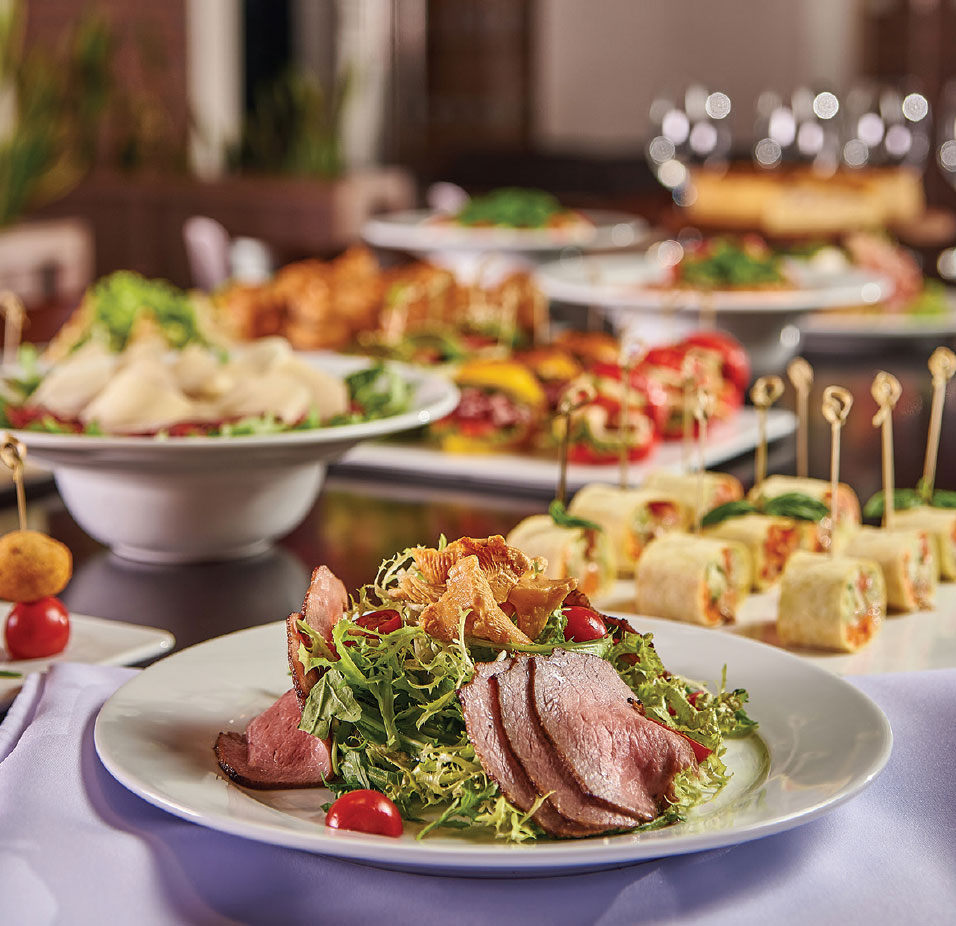
AN ITALIAN MENU
Let’s get down to the basics. A traditional Italian menu typically have five sections:
• Italian Appetizers – Antipasti
• The First Course – Primo
• The Second or Main Course – Secondo
• The Side Dishes – Contorni
• The Dessert – Dolce
• Drinks
This combination of different foods in a specific order is known as a “template”. At its essence, only one starch should be eaten per meals, which is also the foundation of the meal. An Italian menu also incorporates certain foods to stimulate digestion through its dishes such as lemons and wine. Food properly combined together, in the order they should be consumed in, promotes a good food digestion process for an individual’s body. The reason behind the combination is to complete the quality of the meal as some foods naturally taste good together while others don’t. In other words, the quality of a dish is seen more important than its quantity.
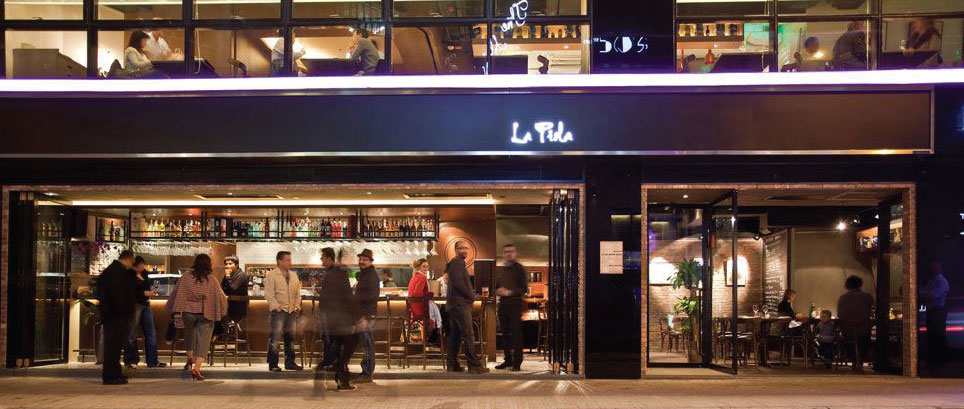
An Italian Menu in… Hong Kong
Over the years, the number of Italian restaurants have increased in Hong Kong. The role of chefs and restaurants managers too are taken over by some Italians. Since some of the early 1980s, the only Italian restaurants found in Hong Kong were Mistral and Sabatini Ristorante Italiano in Tsim Sha Tsui and Rigoletto in Wan Chai. But the market is no longer dependent on only those two.
La Piola, one of the newer spots in Hong Kong, brings a taste of Hong Kong history to the Italian eatery. The restaurant serves cuisines particularly originating from northern Italy’s Piedmont region, La Piola. This is the region that specialises in aperitivo – the Italian custom of stopping for a couple of after-work drinks on the way home. Besides serving the traditional drink Aperol Spritx, La Piola also serves a collection of vermouths, grappas, Italian liqueurs, cocktails, shooters, and wines.
More Hongkongers are also beginning to understand the aperitivo concept. It’s not an “Italian happy hour”, so to say but rather a custom of enjoying the time of the day. Typically, Asians who visit Italian restaurants would also expect table service. But when they see Italians doing it – getting a drink and mingling at the bar, while talking with colleagues and families; they begin to embrace the aperitivo concept.
An Italian Menu in… Singapore
There is plenty of Italian restaurants in Singapore – some with added local touch while some remain authentic. Yet, the element of “localisation” remains evident in the training of coming Italian chefs in Singapore. Singapore is a place where local chefs are encouraged to create their own style of Italian/Singaporean cooking to please the local palate after training under Italian restaurants. Therefore, it is not surprising that there are many different Italian restaurants within the country with distinctive styles. Of course, it’s “business sense” to make certain tweaks to the Italian menu to suit the market.
One good example is Basilico. Long regarded as one of the choice Italian restaurant in Singapore, the constant evolution of their menu is something you can glean from if you’re thinking of starting an Italian-themed restaurant business. Forlino is another known restaurant in Singapore with a recognition for its spectacular view of the Marina Bay. The restaurant has also won awards as one of the top Italian fine dining restaurants in Singapore for its classic Italian menu and its seasonal set lunches.
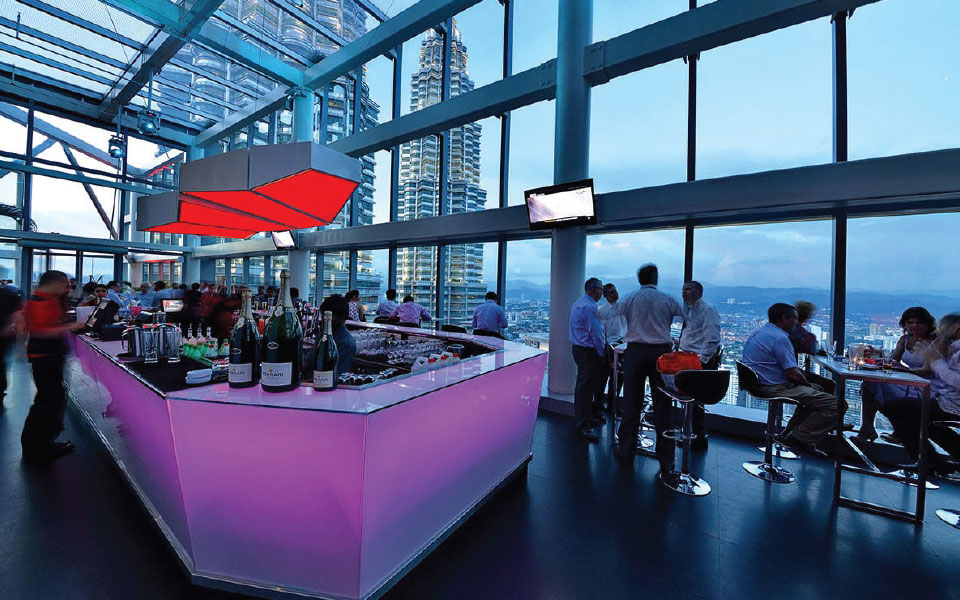
An Italian Menu in… Malaysia
Malaysians simply love their roti canai, nasi lemak, and char kuey teow – they are adventurous too. Yet, every so often, the foodies crave for Italian food – be it a scrumptious pasta or an indulgent slice of pizza. Italian food served at reasonable prices and halal-certified ingredients have found much popularity among Malaysians.
Because Italian cuisines are one of the most popular cuisines in Malaysia, Italian restaurants are increasingly filling up the heart of Kuala Lumpur. These restaurants are not any less authentic than the original Italian cuisines. Italian cuisines such as pasta, spaghetti, and pizza are also found in most cafes in Malaysia. Walk into a Coffee Bean & Tea Leaf in Malaysia, and don’t be surprised to find pizza on the menu! There’s also Marini’s on 57, a known Italian rooftop whisky bar, restaurant, and cigar lounge offering panoramic city views of Kuala Lumpur amongst other Italian bars and restaurants in Malaysia.
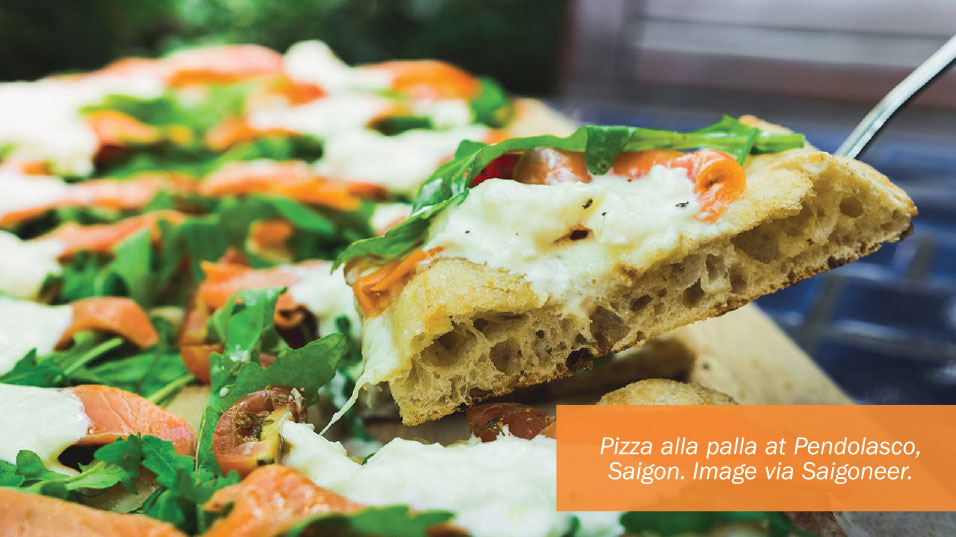
An Italian Menu in… Vietnam
With an influx of expats and foreigners to Vietnam, Saigon is turning into a metropolitain playground for foodies. Ho Chi Minh, an “international city” in Vietnam, is also becoming a hub of curious palettes, including Italian cuisines. With an impressive amount of restaurants emerging only in the last few decades offering international cuisines, the markets are slowly attaining the segmentation of low-budget Italian food and night-time fine dining experience.
One of it is Pendolasco, a bona fide Italian dining experience in a serene environment that has been running in Saigon for a long time. One of its trade secrets – “pizza alla palla”, won the Prestigious World Pizza Championship in Parma in 2017. Specialisation works after all!
STARTING AN ITALIAN RESTAURANT BUSINESS IN ASIA
So, be it authentic or “Asian-ised” Italian cuisines, the demand for the cuisines remain evident in Asia and there are certain elements worth noting from the demand. After all, any Italian cuisine should be a successful combination of tradition and innovation. Here’s a handy guide for deciphering a few types of restaurants if you want to start an Italian-themed restaurant: Pizzeria
In Asia, pizzeria serves pizza as the main offering. Most of them serve pizza during lunch, a lot of time with sides and drinks. While there is a high demand for pizza both in Malaysia and Asia securing the potential of great profits, this profitable bottom line is still subject to the recipe, logistical planning, and the brand or concept it has to offer. Also, be sure to incorporate new foodservice trends into your pizzeria if you’re looking for more ways to captivate your pizzeria customers.
Set your pizzeria apart by offering a uniquely-crafted pizza with fresh ingredients. Experiment various toppings to design innovative pizzas – this could be a great attraction for foodies or experiental diners. Service styles equally matter:
• Sit-down. A sit-down pizzeria is more communicable and hospitable in terms of service. However, it requires a restauranteur to deal with increased investment.
• Delivery. A convenient option for a time such as this, a delivery pizza shop may be ideal but will likely reflect an increased price for customers when the cost of delivery labour increases.
• Take-Out. This is an option that requires fewer space, tableware and equipment and lesser investment.
Some equipment needed to start a pizzeria are:
• Pizza ovens – wood-fired pizza ovens or pizza deck ovens
• Dough preparation equipment – dough press, dough sheeters, mixers, and proofing cabinets
• Pizza cutters
• Pizza prep counter
• Pizza display case
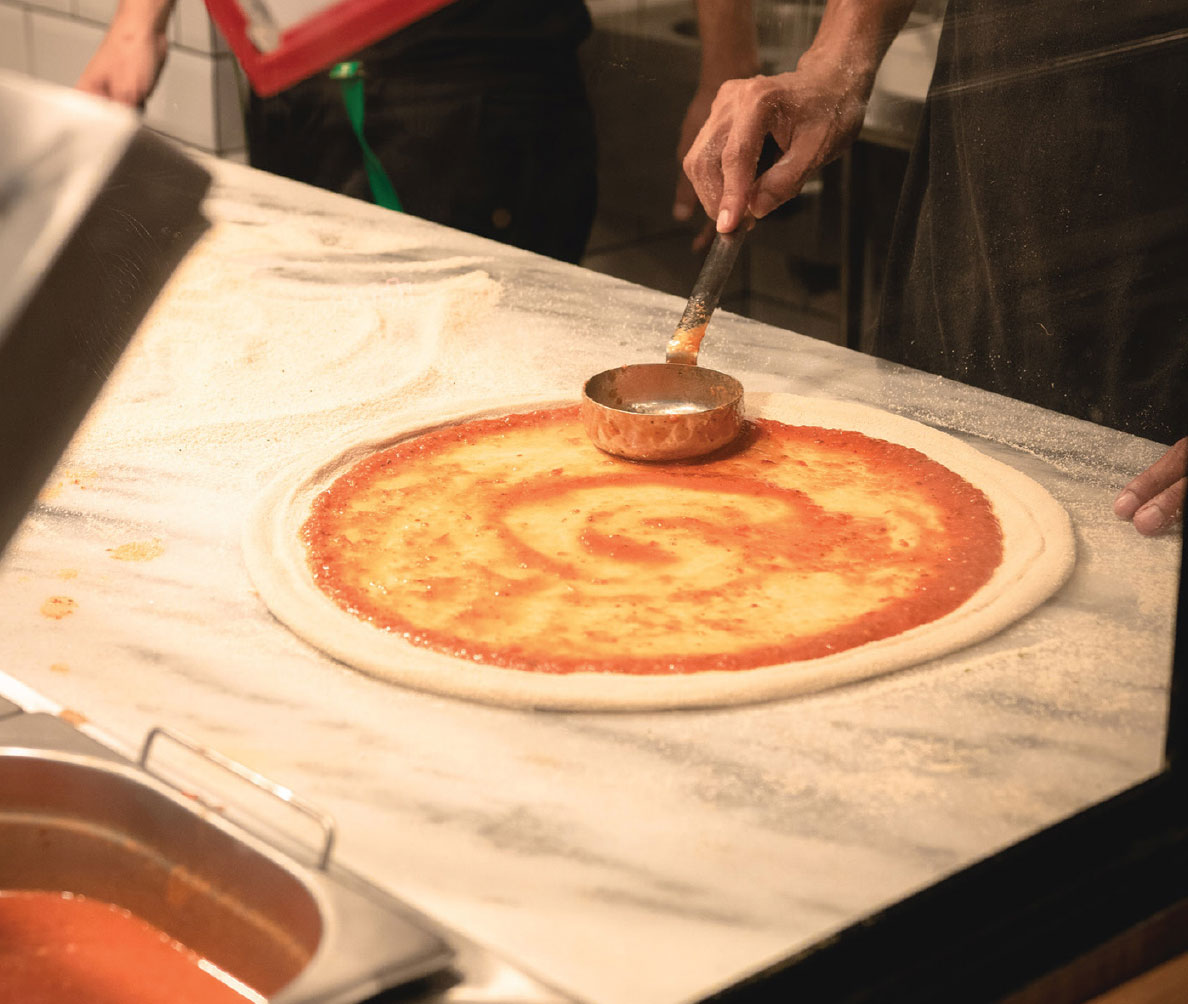
WHY INVEST IN A GOOD PIZZA OVEN?
Have you ever noticed a major difference of taste from a pizza cooked in a wood-fired oven? That’s because its flavour is enhanced following an even heat distribution – the heat storage capacity of wood-fired pizza ovens eliminate temperature fluctuations.
In fact, a significant number of restaurants have switched to wood-fired ovens for their operations in the recent years. Another reason to that is at such high temperatures, a wood-fired pizza oven produces better crust. The radiant heat from the fire makes the heat bounce off within the inside walls of the oven, sealing off any moisture in the dough. This forms the outside crisps of the pizza – the type of pizza people enjoy!
Alternatively, you could also invest in a good pizza deck oven. Designed for baking pizza pies, these heavy duty commercial ovens are often the main equipment for any pizzeria. Depending on the power source, the oven can create high levels of cooking heat which often works for a good crust and pizza toppings.
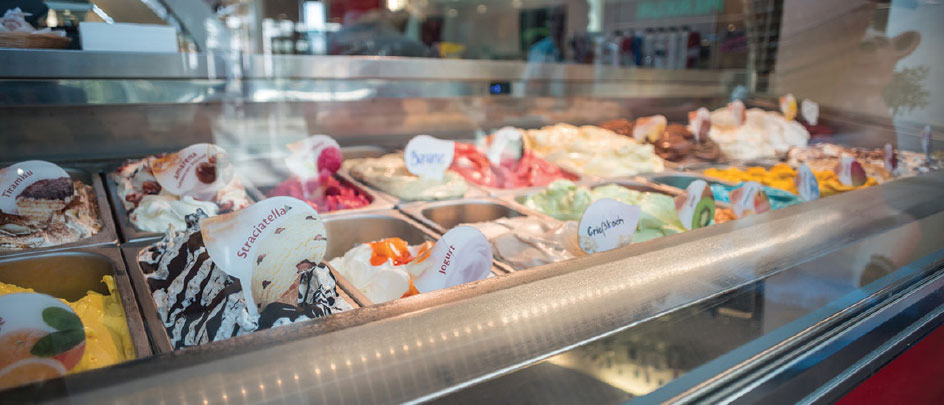
Gelateria
The parlour offers the Italian version of ice cream – gelato. It may serve gelato in a variety of forms such as shakes, cones, and cups. Occasionally gelato bars may also offer specialty coffee and other products. While making gelato is considered an art, gelato business is currently enjoying a worldwide success thanks to its seriously instagrammable scoops and stores.
It started getting attention in the late 1990s and picked up in the early 2000s. With an uptick in sales in the recent decades, there is a distinct market trend indicating customers’ willingness to pay more for premium ice cream treats such as gelato. Apparently, successful gelato shops are found to offer innovative flavours and standard dessert menu items in their bars.
However, the gelato business is one that can lure a business owner into buying some pieces of equipment that are not needed right away. Some equipment that you essentially need at the start of business are:
• Gelato showcases
• Pasteurising machine
• Batch freezers
• Storage freezer / tempering cabinets
• A cream whipper, an immersion mixer, and a planetary mixer
DRINK TO LA VITA BELLA
Besides regional cuisines, Italy is also known for its wine, drinks and – la vita bella. La vita bella means “a beautiful life”; a close definition to the “zen” of Italian style. In fact, the true “vita bella” is living with passion, authenticity, and enjoying every moment thoroughly, be it spending time with family, enjoying a drink, or enjoying the little things in life. This is not an exception in Asia when you sit in an Italian bar.
Coffee
But first, let’s talk about coffee. Italians drink coffee small and fast. Believe it or not, they down their espressos while standing! Sipping espresso at a bar in Italy is completely normal. But here, a bar can also be a café that sells snacks, pastries and most importantly, coffee – on-the-go. Although the coffee “bar” and “downing” an expresso is not something Asia is accustomed to, the Italian’s all-time favourite coffees such as expresso and cappuccino remain served throughout the cafes in Asia. In fact, Italy has been at the forefront of establishing the coffee standards for nearly 400 years in regard to how coffee should be properly made and taken.

Vino (Wine)
Italy produces more than one million different kinds of wines and obviously, a good glass is wine is expected to accompany most Italian cuisines. Yet, Italians drink for the aesthetic of drinking rather than the feeling of it. This standard of elegance has been carried forward to Asia, as people put more emphasis on enjoying their wine rather than going overboard with drinking wine. This is especially evident in the Italian bars in Asia. In fact, recent research shows that women who drink wine constitute a growing market in Asia. Most of them talk openly about drinking wine and even drink it for health reasons.
Cocktails
Italy also plays an important role in reinforcing the appeal and glamour of cocktails, which is significantly recognised in Asia. The cocktail trend took off in the fifties and has been getting more vibrant since. Served in uniquely shaped glasses, with a deep sense of mixology ritual of cocktail preparation, some of the famous Italian cocktails seen in Asia include:
• Martini Cocktail
• Aperol Spritz
• Americano
• Vermouth
• Negroni
• The Godfather
Aperitivo
Typically between 7pm to 9pm in Italy, the pre-dinner drink or “aperitivo” is an Italian custom that gets people to start drinking to get their digestive juices flowing prior to dinner. There are three important digestive purposes attached to the custom: to unwind and socialise after work hours; to kickstart digestive metabolism; and work up an appetite before dinner. This may be called a “happy hour” in Asia, but it isn’t. In Italian bars in Asia, drinking to oblivion is discouraged. Rather, drinking to unwind is encouraged to keep up with the aperitivo culture.
What about you? Which one is your favourite?
An Italian proverb says, “At the table with good friends and family you do not become old.” Indeed, food, drinks, and fellowship should be celebrated. Find out in the next article from LEVELS Studio how this celebration can continue in your restaurant when you deliver your Italian restaurant concept effectively.







